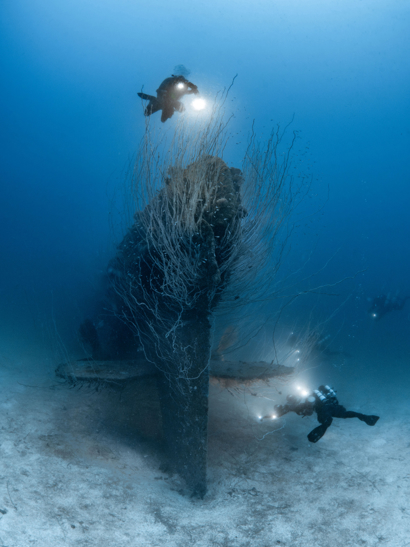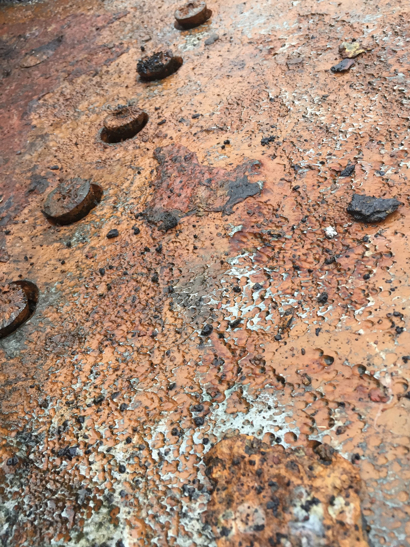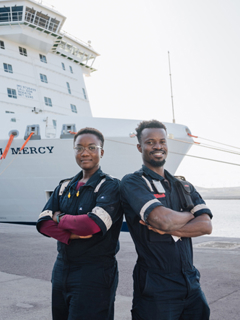Across the world’s oceans, more than 8,000 of the shipwrecks left by two world wars still contain significant amounts of oil – possibly as much as 20 million tonnes. That is 500 times more oil than the amount released in the Exxon Valdez incident.
Erosion over time, exacerbated by increased storminess due to climate change, along with port development and ocean industrialisation, have massively increased the risk of catastrophic pollution events caused by these wrecks. However, incomplete data on location and condition, combined with complex governance issues, have resulted in the need for high-cost ‘emergency response’ work rather than planned interventions.
As Mark Spalding, President of The Ocean Foundation explains, more proactive management is needed to deal with scale and urgency of this safety threat: “Too often, a leak is only discovered when it is already causing harm. We know it is certainly far less expensive to prevent pollution than it is to rebuild coastal industries and communities or restore damaged ecosystems. Coordinated action is needed now.”
Too often, a leak is only discovered when it is already causing harm. We know it is certainly far less expensive to prevent pollution than it is to rebuild coastal industries and communities or restore damaged ecosystems.
Creating a coalition for change in a complex system
Lloyd’s Register Foundation is building a global coalition of experts to create technical standards and engage international bodies in order to enable a more strategic response to the challenge. Yet working to engineer a safer ocean is only one element of a multi-dimensional problem. Some of these hazardous wrecks also act as artificial reefs and enhance local biodiversity, often contributing to the eco-tourism economy. Many are designated as of historic value and as war graves. In addition, potential pollutants are not just residual oil – munitions and other chemicals create both toxicity and safety hazards.
Partners such as International Union for the Conservation of Nature (IUCN) and the International Committee on Underwater Cultural Heritage (ICUCH) – which is part of the International Committee on Monuments and Sites (ICOMOS) – both official advisors to the UN – will ensure that natural and cultural heritage values are fully recognised in assessment, remediation, and restitution efforts.
IUCN has already passed resolutions urging international cooperation and Joao Sousa, their Senior Programme Manager, believes that a holistic approach is vital: “By prioritising the protection of our oceans and the preservation of the myriad species that call it home, we can not only safeguard biodiversity but we are also ensuring safety and the sustainability of livelihoods that depend on these precious marine resources.”

Building local capacity and capability is essential
Some of the most intense concentrations of these wrecks are in the Global South, but resources currently don’t match the threat. Waves Group Ltd provide high resolution scans and risk assessments of pollution from wrecks to users worldwide. Their CEO, Simon Burnay, commented: “Agencies are beginning to take a more systematic approach to assessment of legacy wrecks but surveys show accelerating structural collapse and a near certainly of pollution events – we are entering a period of severely heightened risk.”
Raised awareness and local capacity building are essential. To this end, Marinas Guardian recently signed a Memorandum of Understanding with the Conservation and Environment Protection Authority of Papua New Guinea, and are working closely with the National Maritime Safety Agency there, to help accelerate establishment of large Marine Protected Areas (MPAs) and address the risk presented by some 400 Second World War wrecks.
However, Jason Peers, CEO of Marinas Guardian, believes that policy frameworks are not adequate: “Polluting legacy wrecks just don’t have the visibility they should have in marine planning discussions – which is alarming given the scale of damage that could be caused to MPAs by oil release. We support established organisations such as the Major Projects Foundation to undertake strategic survey campaigns, but data collection must be combined with readiness to prioritise and undertake interventions. Availability of technical standards will be critical to raising finance to do this.”

New survey data is urgently needed but archives also play a critical role
Better information is fundamental to tackling this challenge – and not only from new surveys. Dr Innes McCartney, Maritime Archaeologist and Historian at Bournemouth University, writes about the importance of learning from the past. He says: “When a ship sinks with a dangerous cargo on board, it threatens the safety of the whole marine environment. That situation becomes more acute still if you can’t identify the exact location of the ship. Our research used marine geophysical scanning and the recently digitised records at the Lloyd’s Register Foundation Heritage and Education Centre to identify 129 previously unknown or mis-identified wrecks in the Irish Sea. Three of those were tankers – all potentially highly polluting wrecks that could be catastrophic to the marine environment.”
The Lloyd’s Register Foundation Heritage and Education Centre curates an archive that includes 1.2 million digitised ship plans and survey reports dating back to the 1830s, and is planning to digitise additional material from the 1960s to 2000. All of these legacy plans and reports will be made freely available online.
This investment is very timely. The archive contains plans that are critical to the design of effective interventions to make potentially polluting wrecks safe. As Matt Skelhorn, Wreck Manager, Salvage and Marine Operations at the UK Ministry of Defence (MoD) confirms: “The Lloyd’s Register Foundation archive has proved critical to the efforts of Salvage and Marine Operations to manage the UK MoD’s inventory of potentially polluting shipwrecks. The easy access it provides to ship plans and related material has been vital to researching and planning the surveys of such high-risk World War Two tanker wrecks as the RFA War Mehtar and RFA Athelmonarch. The importance of the repository will only grow as the risks posed by legacy shipwrecks increase.”
The Foundation’s Heritage and Education Centre is forging new partnerships to make the collection even more useful – for example by collaborating with a major new European Research Council programme investigating how wrecks deteriorate over time. . The ENDURE programme, led by Professor David Gregory at the National Museum of Denmark, involves baseline studies of more than 54,000 wrecks. The aim is to assist in predictive modelling by determining the role of ship design, form and function on the rates of decay through in situ monitoring and laboratory investigations.
The Centre will also focus on how seabed features can be more quickly and reliably associated with archive records, with a potential role for AI and related technologies.
A multi-agency, multi-disciplinary approach is needed
Lloyd’s Register Foundation is supporting partner organisations to establish an evidence base that will underpin advocacy for strategic action and to formulate technical standards and protocols to optimise assessment and management efforts. These standards will also underpin the case for establishing financial aid for critical interventions. Investment made now to prevent incidents through proactive management will avoid many billions of pounds of future costs resulting from damage to livelihoods and environmental remediation. The safety and resilience of many vulnerable coastal communities and ecosystems will be enhanced and investments in ocean stewardship through mechanisms such as Marine Protected Areas will be safeguarded.
The Ocean Foundation is leading delivery of a publication, due in early 2024, that collates current evidence and insight on potentially polluting wrecks - this work has been endorsed by the UN Intergovernmental Oceanographic Commission (IOC) under the UN Decade of Ocean Science for Sustainable Development. The publication will frame a series of stakeholder workshops led by Waves Group Ltd, supported by Marinas Guardian, that will lay the groundwork for international standards development. It is anticipated that initial guidelines and protocols can be disseminated at an early stage in this programme. However, the establishment of full international standards will ultimately involve collaboration with key UN agencies and member states – with this in mind, outreach is underway via support for UNESCO events and attendance at the forthcoming Ocean Decade Conference in Barcelona.
We welcome contact from any organisation wishing to know more about this work or with an interest in contributing to the programme. To find out more, please contact: hec.info@lrfoundation.org.uk







